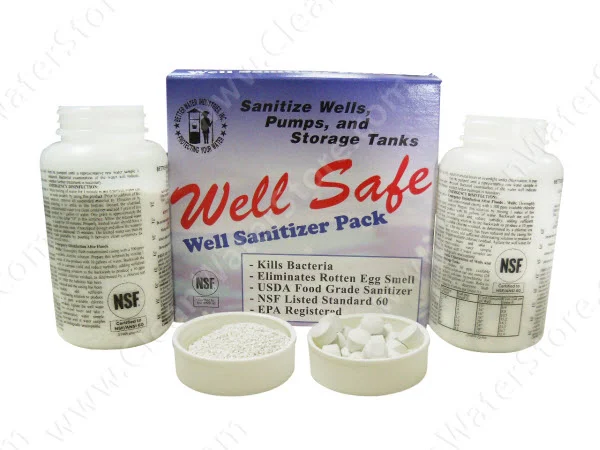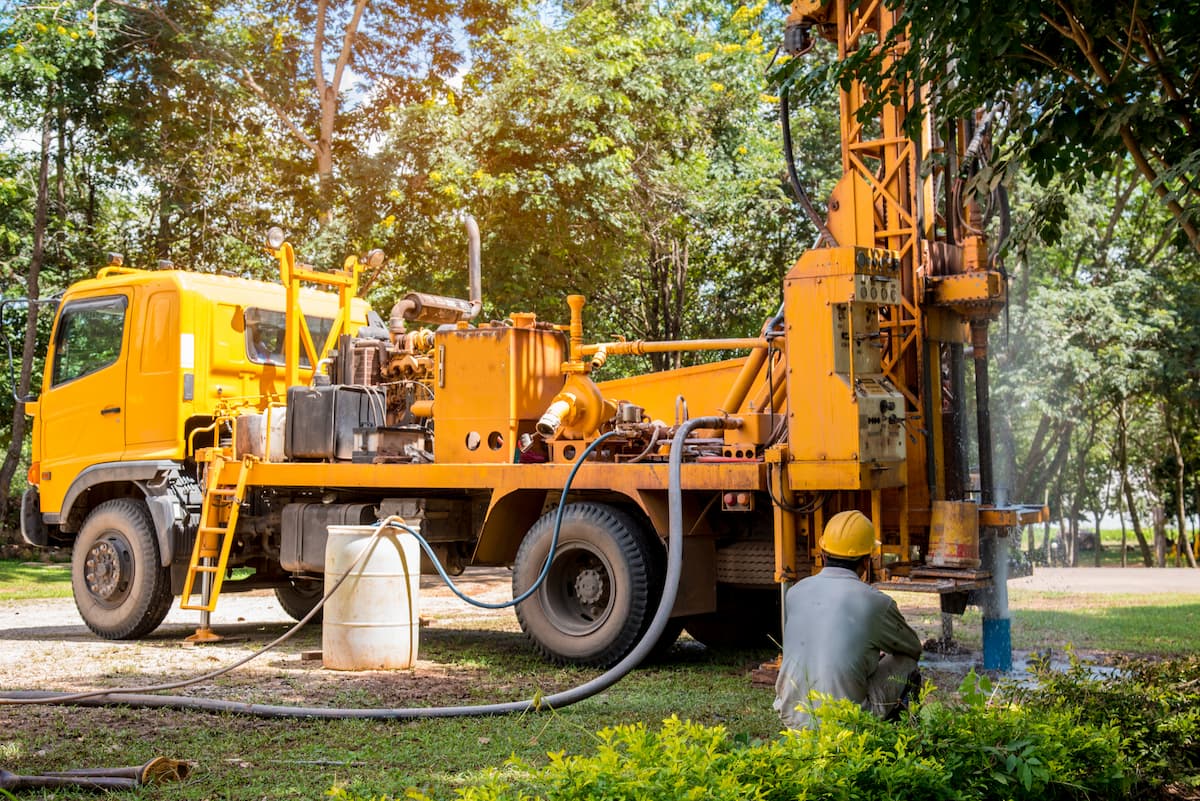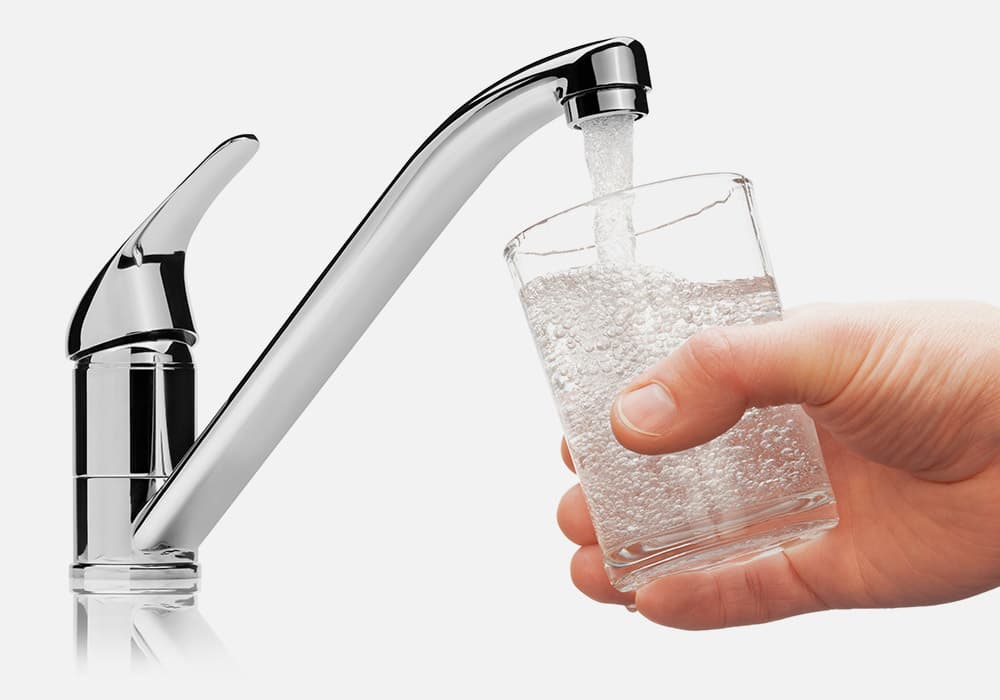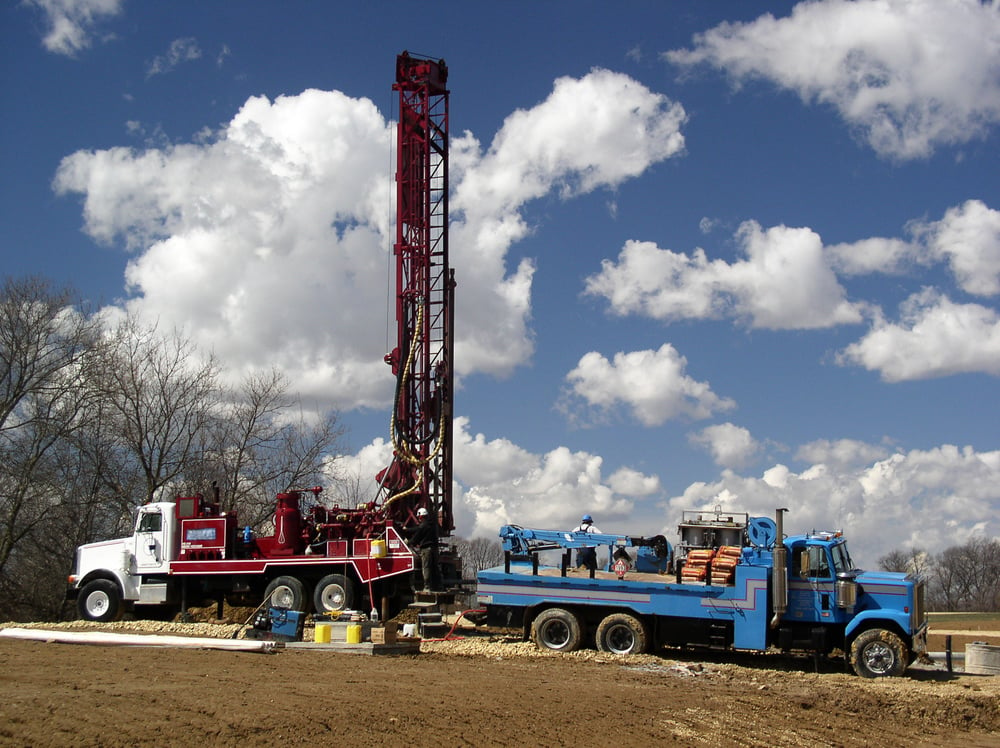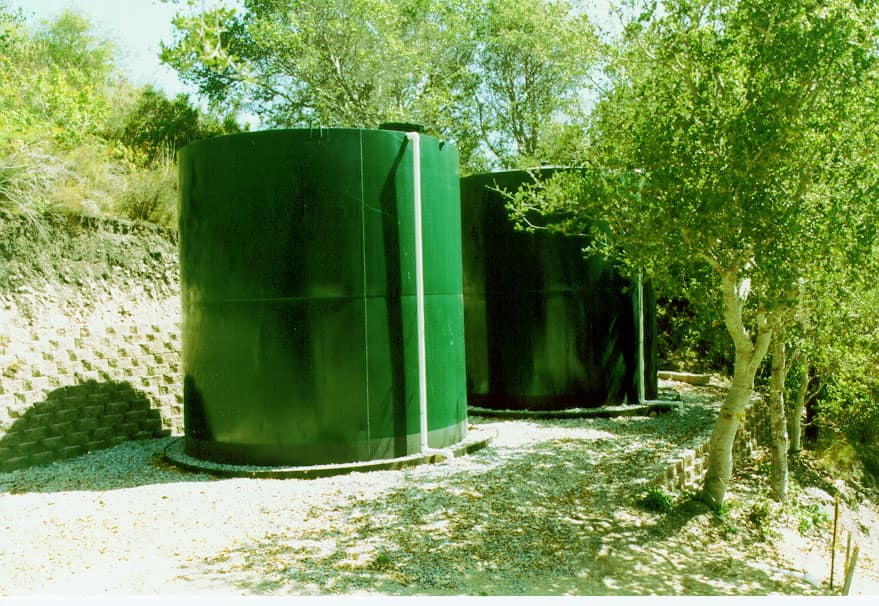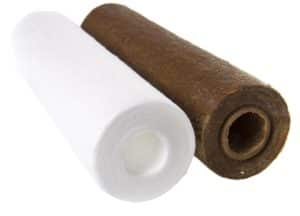Iron and Manganese Treatment for Well Water
Podcast: Play in new window | Download
Subscribe: RSS
In this episode of the Clean Water Made Easy Podcast Episode I explain the basics of how to deal with iron manganese treatment in well water.
You will learn how to remove iron and manganese from your water, and why these metals are there in the first place. I share some easy to follow steps to finding out what type of iron you have and if you have manganese as well. I also go over various best options to treat your well water and have clean, non-staining water throughout the house!
Iron Manganese Treatment Topics:
● Reasons for Iron and Manganese in your water
● Signs your water is contaminated with Iron and/or Manganese
● Types of Iron found in well water
● Iron Manganese Treatment Options
● Aeration versus Chlorination versus Ozone
Resources
Iron Manganese Transcript Episode 5:
You’re listening to the Clean Water Made Easy Podcast episode number 5.
Hello, thanks again for tuning in to the Clean Water Made Easy Podcast. It’s Gerry Bulfin again here. Water treatment contractor and WQA certified Master Water Specialist. Hope you’re having a great day while you are listening.
In this series of the podcast I’m giving useful, easy to follow tips and information all about well water, well water treatment systems and how to improve the quality of your well water. In today’s episode, we’re going to cover the basics on how to remove iron and manganese from well water.
Free Download of Guide
I have a popular guide, it’s called The Complete Guide To Iron Treatment: how to treat iron, manganese, and odor in well water. This is an easy to follow guide that has a handy checklist and is about 40 pages long. I have sold it in the past but I’m offering it free to listeners of this podcast and if you want to get your guide just text the word “ironfilter” all one word, to 44222 or you can go to the website cleanwaterstore.com/podcast and look for episode 5 and get it that way.
Iron
We’re going to go over what type of iron do I have in my water, and what is my well water chemistry (mostly nontechnical). We will also cover what’s the source of the iron or odor, what’s the flow rate I have available in gallons per minute in order to size an iron filter if I ended up needing one. And also we’ll cover the basic types of iron treatment systems out there and how they work.
The first step to learning how to remove iron, manganese or odor from the waters is to understand a little bit about where iron comes from and the different types of iron found in well water. Iron itself is an element, it’s a very plentiful resource. It makes up at least 5% of the earth’s crust. That’s one reason it’s very common in groundwater. In well water, you generally find iron in the dissolved state. So, in other words, it’s clear.
The water looks clear, but it tastes terrible. It is full of iron. It is clear when you first draw it from the tap because it hasn’t been exposed to air. Sometimes it comes out of the ground rusty too but it just depends on the situation. But the maximum level of iron recommended in water is 0.3 parts per million which is the same as 0.3 milligrams per liter.
So if you have 0.3 milligrams per liter or less, generally it’s not going to cause a big problem. Might annoy us a little bit here or there but it’s not a big problem. But when it gets above 0.3ppm or higher, then all of the sudden you’ve got problems with staining fixtures, staining laundry, it can stain your hair, it can stain all kinds of things. So basically, you want to try to reduce that iron to .3 ppm or less.
Manganese
Manganese is another metal that leaves stains. Instead of rust stains like iron it leaves a brown or tea color stain. It also has a bitter taste that some say kind of reminds them of asphalt or petroleum type taste or smell, but very low levels of that can cause you problems. 0.005 milligrams per liter is maximum amount of manganese you want in your water. So if you have 0.1 of manganese, that’s twice the level of what’s recommended and you will see some staining.
The water may also have a metallic taste and offensive odor to it. With iron you can get water system pipe and fixture constrictions, or appliances such as water heaters and dishwashers can be clogged with rust and sediment. Iron and manganese also gives water a undesirable taste and can produce a weird flavor when combined with tea or coffee.
So when you’re trying to figure it out, “okay I’m pretty sure I’ve got iron and manganese what do I do?” Okay, so the first step you want to find out is, what type of iron do I have? How is it found in the water? What is my well water chemistry?
You want to know a basic general mineral analysis of your water – you want to know what the pH of the water is know how much iron is in the the water, how much manganese is in the water, and what is the source of the iron is. Now you think that obviously the source is from the ground but not always. Sometimes the water coming around the ground will have no iron in it, but maybe the water is corrosive and you have some iron pipes. Even if you don’t have iron pipe in your house, maybe you have an iron pipe nipple somewhere or maybe the pressure tank is corroding and it’s adding iron into the water.
There’s only four main types of iron, which you can think about as the most common conditions which iron is found in the well water. The most common one is ferrous iron, where it’s dissolved. There is also insoluble oxidized iron, it looks like rust and it is sometimes called red water iron. That is as type of ferrous iron that’s been exposed to oxygen already and it’s turned into rust.
And then you have organic iron, where the iron is in a compound that is complexed with different types of organic material like a humic acid or tannins. And then you have iron bacteria.
So let's go over those quickly, step by step. Clear water iron, like we said, is water that when you pull it out of the ground it’s clear and then it turns to rust. Now this exposure to air can happen anywhere such as in your toilet, wash machine or bath.
So to determine the type iron, what we can do is fill a clean, white 5 gallon bucket. If the water is crystal clear, then you have primarily ferrous iron. For this type of system we want to use an oxidizing iron filter, we’ll talk about that a little bit later, such as the pro-OX or another manganese deoxidizer. Red water iron is the next one, known as ferric iron or rust, this iron has been exposed to some oxidation already so it’s no longer dissolved in the water. This again we’d use an oxidizing iron filter.
If you have water coming from say a lake, or it’s coming from the storage tank where 100% of the iron is ferric iron, you could use a sand filter or some kind of mechanical filter that not a oxidizing iron filter. It is very rare to see this but we’ve seen this with customers in Texas where groundwater is filling lakes and it’s full of rust.The next one is organic iron. Some waters contain high levels of tannins which can enter the well water from the surface. Material such as leaves, grasses, and other plant materials cause these tannins and then later combine with the iron. For this, you need something to break those bounds and so usually we use chlorine bleach, peroxide or ozone gas with sufficient contact time.
You need other water treatment chemicals too but this is what you can figure out based on testing how bad the organic iron is. But essentially with that, usually you’re looking at chlorination system as the lowest cost way to go. You can use ozone too, which is a much higher cost but is a way to deal with the organic iron.
Iron Bacteria
Then there’s iron bacteria. Iron bacteria is a general term used to describe various species of bacteria that use iron to live and grow. So these iron bacteria live, grow and die on the iron and create slimy messes inside the pipes. And this stringy material you can often see it in the toilet tank.
If you have like a stringy material growing out from the sides of the flush tank then you’ve probably got iron bacteria. The best way to get a chlorinator and then run it through the iron filter and then run it through the carbon filter so you don’t have any chlorine residual in the home. That’s a good way to do it.
So that’s a quick summary but first step to do to figure out what you’ve got going on is to do a water test. So water tests are important on which type of iron filter to use and if your water is acidic or not. Test should include alkalinity, hardness, iron, manganese, pH, and dissolved solids. If you have a rotten egg odor, then you could do a hydrogen sulfide test. If the water has a tea color to it or yellowish clear color to it, then we do a tannin test as well.
If your source of water is a public water system and you’re experiencing iron related problems, the first step is to contact the water utility and see what they recommend. But usually you can put an iron filter still right at the house because that water has usually been chlorinated first. So an iron filter works really well especially an manganese deoxidizer and filter to remove the rust as it comes into the house.
Physical Inspection and Water Testing
The other thing to do is a physical inspection and again, test your well water. We covered this in episode 4 and also in episode 2. And basically what you’re doing is you’re doing your toilet tank inspection, you’re checking for odors, you’re checking for pipe corrosion and buildup, and you’re identifying your pipe size. It’s useful to know the size of your incoming pipe.
For instance say you want to install an iron filter for your home. You might want to get one three quarter inch, or maybe you have a large home with large diameter pipes and you might want to get a commercial iron filter. So it’s good to know what size pipe you have. It’s very easy to find that out.
Iron Manganese Treatment Systems
Okay so, what kind of system works the best? Well, for the most part, what we’re talking about are iron filters that oxidize the dissolved ferrous iron in the water and turn it into an insoluble particle. In other words, it is clear in the water and now you’re going to oxidize it and turn it into a little particle that can get trapped in the iron filter media. Then once a week or twice a week, depending on how much water you use, the iron filter will turn on and backwash that water out. It will clean the filter media and all the rust and sludgy stuff will get backwashed out to drain.
You can backwash it to your septic tank which doesn’t hurt it, or you can put it in a separate drain field or run it into a pit or wherever you decide. The backwash is a separate subject but it depends on your local codes. Most people do run it into a septic tank, and it doesn’t hurt in a bit. But some areas don’t allow that. But anyway, that’s the basic concept.
You’ve got some kind of iron filter and it’s usually related to manganese dioxide which is a powerful oxidizer. It has become a favorite for iron removal. And these oxidizing iron filters are usually used with some type of oxidizer to aid the filter media. Common oxidizers are potassium permanganate, chlorine like bleach, or ozone which is a gas to aid the filter medium oxidizing the iron.
Kinds and Brands of Iron Filters
Common brands are Filox, Pro-OX, and Pyrolox. We have itself Pro-OX but there there are all relatively pure manganese dioxide. It’s not a coated media. So that’s, as compared to another kind of manganese dioxide media which is Greensand and then there’s other type of brands, Glock makes their Birm.
Basically it’s a type of filter media. Instead of being solid manganese dioxide, they take a thin coating of it and coat some less expensive media and also some lighter media. That’s the advantage of the coated ones is it that they’re lighter. So it takes less backwash water to backwash them. But we found works best for our customers and mainly last the longest is the solid manganese dioxide media.
As long as it’s set up correctly, it’s backwashing correctly, it’s backwashing at the right flow rate, those generally work better. They’re more powerful than the coated ones. Instead of having 1% manganese oxide or 10% manganese dioxide, they're 100% and the kind we use, Pro-OX, is very porous. So you don’t get just the outside of the grain like with the coated media, with the Pro-OX the entire grain is creating a reaction so it’s very powerful.
With this translated, you get a higher flow rate with a much smaller filter. So it’s kind of a trade-off. You can get a smaller filter and you actually get better performance than a bigger coated. That’s what we found, people have different opinions. We sell both, some people still want Greensand or Birm or other coated ones. We have other coated media as well. But our best one that people most have is Pro-OX.
But anyway, so that’s the basic kinds. The basic concept is the same. You’ve got a manganese dioxide filter and you’ve got some aeration happening or chlorination or ozone ahead of it. And then that gives just a little bit of dissolved oxygen in the water or a little bit of oxidizing power so that the media works really well. Now the Pro-OX media, it actually can work, if the pH is between 7 and 8 and under certain conditions, which is actually very common conditions, they’ll work without any kind of aeration.
They’ll just work on their own because there’s a tiny bit of dissolved oxygen in the water. So this catalytic reaction happens and the iron and manganese is removed. So they can work but generally they work better with a little bit air. So we used to use many years ago was an inline air injector to suck in air and so when the well pump turned on, this injector would create a little pressure drop and suck in air and those work fine but the problem is the air injectors themselves, because all the water is running through them they can get plugged up.
So the brands that used these terminator, there’s different brands that used these types, the inline air injector, they still work fine and they can be rebuilt if you happen to have an old one. But generally people try to get away from them. There is some pressure drop through the air injector and you’ve got little more maintenance than the next type I’m talking about which is what we call an air charging type.
So what that means is that the backwash control valve which sits on top of the tank of your iron filter tank, that sucks in air when it backwashes, or in the kind that we use, suck in air independently of the backwash. But essentially what it's doing is, it’s creating a head of air at the top of the tank. So at the top of the filter tank, instead of being filled all the way to the top with water, there’s about 12 to 16 inches of air and so there is oxygen in it of course.
When the water flows into the tank it flows to the top and it gets exposed to the air. And just that little bit of exposure is all it takes to have enough dissolved oxygen for the catalytic media to really work great. So the air charging type is one we recommend the most. It’s least maintenance.
There is maintenance to them, there’s some maintenance to the air injector that’s sucking in the air. So every year or so, you have to replace or clean some parts in the control valve but they’re pretty easy to take apart, it doesn’t take much time. It’s very quick and probably the lowest maintenance type out there, as supposed to the air injection type or other kinds.
So if you’ve got just iron or iron with a little bit of manganese, low manganese, say .2 ppm or less, then the standard air charging filter will work fine. If you have a problem where you have iron, manganese and sulfur odor, the air charging type will still work fine but once you get over a certain level, if you have really severe hydrosulfide, say over 5 parts per million like 6 8 10 parts per million, it’s really strong or really terrible, then you’re better off chlorinating ahead of it, although you can still use the air charge type
You could use ozone too but ozone is more expensive because you’re injecting a gas into the water. You can’t use it very well in the air charger type because the ozone gas is very corrosive. It works great. We’ve used ozone, we have a lot of customers with ozone, we’ve used it for many years. But the simplest system we found for most residential applications for homeowners is a chlorinator. Chlorinators are easy to deal with. You’re just adding chlorine bleach to it so it’s low cost.
Ozone System and Chlorinator
The equipment upfront is much lower cost than the ozone system. You’re getting disinfection, killing the iron bacteria if you have any iron, and oxidizing the odor, and it’s cheap to remove. So in other words you can inject the chlorine, run it through the iron filter, and the water coming out is clean.
It might have a little bit of chlorine residual left in it. At that point you can put on a carbon filter so the water in your house is not only clean and disinfected but there’s no chlorine residual. So that’s one option to go especially if you have iron bacteria or you have high levels of manganese or hydrosulfide present. We recommend chlorine injection or ozone injection.
The last kind is another type of air system that’s very effective is a air compressor system. So you’re actually using a blower, an air pump, to pump in air. So that you have a separate tank, you have 2 tanks and the first tank is just dedicated to the air and every time the well pump turns on, or it could be set up on a timer, but when the well pump turns on, the air compressor turns on and puts in fresh air, blasts the first tank with air. So when the water’s flowing into that tank it gets a higher level of air then the standalone air charger tank.
That works good if you absolutely don’t want any chlorine and you want to use it for higher levels of hydrosulfide or manganese. But generally, the chlorination works better. The problem with the air compressor systems is that you’re putting a lot of air into the water even though it’s gassing off too.
You can end up getting, when you first draw the water in a glass, the water may appear white because it got so much air in it but then it quickly leaves the water. But generally it would be dissipated by the time it gets in the house. But that can be one slight issue most people don’t mind it but that’s a disadvantage of the air compressor type but we do have a lot of customers using the air compressor types that works really well. But generally this single, standalone iron filter with an air charging type, or it keeps a head air in it, is the best way to go.
The other thing to look at is the pH of the water. If your water is acidic, if it’s less than say 6.8, then you want to neutralize the pH before it gets to the iron filter. We also have tanks where there’s some calcite which is a natural mineral to neutralize and raise the pH and get rid of the acid water.
That can go in the same tank with the iron filter media but since there’s only a small amount in it you end up having to add calcite more frequently. So it’s better to get a separate standalone tank if you can do it. Then you only have to refill it once a year, that’s it. You got to unscrew the plug on top and fill it up back up to the two thirds level with calcite.
So there’s pH to think about as well. This all comes out on the general mineral analysis. We’ll explain what the different parameters, like how the pH and iron and manganese levels, affect what decision you make on what type of system to get.
Okay, well that covers the basic overview of iron and manganese treatment. And next week we’re going to talk about how to eliminate odors from well water. I hope you found this information helpful and it’s covered in a lot more in-depth with pictures and things in our guide, how to treat iron, manganese, odors in well water, and if you want to get your guide, again just text the word “ironfilter” all one word to 44222 or you can go to the cleanwaterstore.com/podcast website and look for episode 5 and find it in there.
Well, hope you enjoyed it and thanks again for listening.
If you find the information here helpful, please share it with your friends.
[bctt tweet=”Water tests should include alkalinity, hardness, iron manganese pH, dissolved solids, and test for hydrosulfite as well.” username=”@gerrybulfin”]



